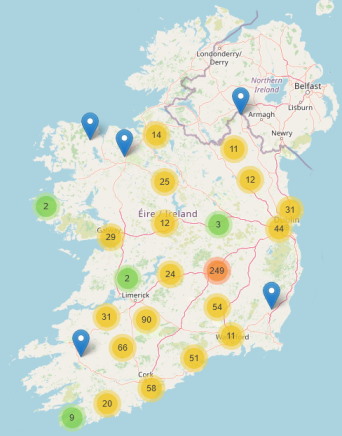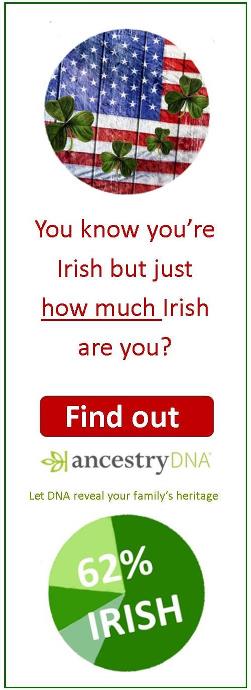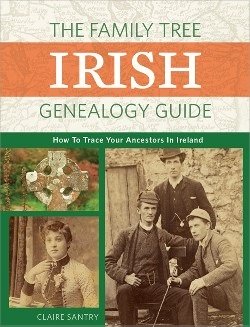- Home ›
- Irish genealogy A-Z ›
- Irish burial records
Irish burial records, death announcements, funeral reports and headstone inscriptions
This page deals with Irish death records created outside the mandatory civil registration of death system. It provides details of online collections such as church and cemetery interment registers and headstone and memorial transcriptions, and suggests sources for finding published reports of deaths and funerals.
For civil death registers (1864-current), see the Irish Death Records page.
Irish burial records - those formally noting interments in individual burial grounds - used to be as rare as hen's teeth.
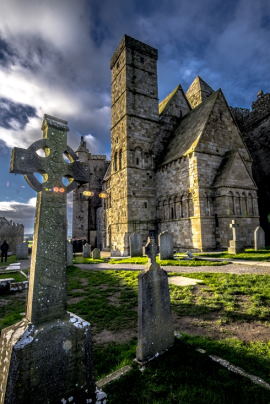
Other than a proportionally small number of church burial registers and those records created by Glasnevin Cemetery, most researchers were limited to discovering a date of death in a civil record, a book of headstone inscriptions or a newspaper report.
In recent years, mainly thanks to the internet, family history society volunteers, and local community groups, more Irish burial records, headstone inscriptions, cemetery registers, and death/funeral announcements can be found much more readily, even if the gathering of information is still largely being done in a fragmented manner.
This page of Irish Genealogy Toolkit should help you. It includes details and links to the larger online sources of headstone inscriptions and photos and burial ground records and photos, all of which are free to users, if not to the burial authorities. My list also includes sources for burial registers of localised, individual or clustered burial grounds, and other suggestions for tracking down these important records.
Irish burial registers, obituaries, and headstone transcriptions
- Belfast City burials, (€) comprising about 360,000 records starting in 1869, on the Belfast City Council website.
- CarlingfordPeople, Co Louth, (€). Headstone transcriptions.
- Clare County Library has transcriptions from more than 120 graveyards here.
- Cork Archives (free) Burial registers from seven burial grounds in and around Cork City can be downloaded in pdf format. So, too, can the registers for Abbey graveyard in Bantry. (Many more are not online but can be accessed in person at the archive.)
- Cork Graveyards (free) Skibbereen Heritage Centre has created a database holding transcriptions of headstones and burial registers from 128 graveyards in County Cork. Although originally taking in only the southwest of the county, geographical coverage has been extended since 2023, spreading east, south and north from Beara Peninsula's County Cork parishes to Macroom, Ballyclough, Clonakilty, Ballincurrig, Killeagh and Youghal, and others. Also photos and videos of some burial grounds.
- Derry City Cemetery Records Project. A volunteer project to transcribe the burial registers of this mixed denomination cemetery. Burials span 1853-1960s.
- Dublin City: Dublin City Library & Archive (DCLA) holds a couple of free databases relating to burials and cemeteries. Currently available only to personal visitors at DCLA, they were, until March 2024, available online and free, and may yet return to that status. In the meantime, their creator, genealogist John Grenham, is hosting the databases (no charge) on his website. Choose the Dublin Graveyards Directory or Dublin Burial Registers. The latter are for Bluebell, Clontarf and Finglas cemeteries.
- Dublin City Graveyards (free) is a collection of ebooks on the graveyards and memorials of St James's, St Catherine's, Bully's Acre and Royal Hospital Kilmainham, and the Moravian Cemetery in Whitechurch. Transcriptions and more, by genealogist and tutor Sean J Murphy MA.
- Dublin Cemeteries Trust (previously Glasnevin Trust) offers a database (€) of more than 1.5million individuals buried in Glasnevin Cemetery alone, plus those interred at Dardistown, Newlands Cross, Goldenbridge and Palmerstown.
- EnfieldGraveyards.com (free) Transcriptions from 32 burial grounds. See Meath and Kildare below.
- Fingal/North Dublin, buried in: (free) This interactive site includes a database holding Irish burial registers from 32 cemeteries located in the north of County Dublin.
- Galway Archives burial registers (free) for more than 60 burial grounds. 40,000+ entries
- Galway Archives (free) has headstone inscriptions for 32 Galway cemeteries, all collected by a volunteer community project.
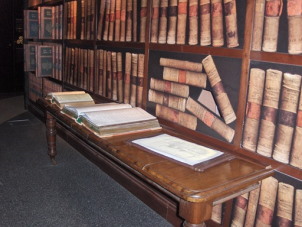 Glasnevin Cemetery has a pay-to-view database of its 1.6m residents
Glasnevin Cemetery has a pay-to-view database of its 1.6m residents- Glasnevin cemetery. Renamed Dublin Cemeteries Trust, March 2021. See above.
- Kerry Local Authority burials (free) records from 140 cemeteries in the care of the county's council.
- Kildare County Council’s County Archives service has made a selection of interment registers for 15 graveyards available online (free). Included are burials at Ballybracken, Kildangan; Crosspatrick, Kilmeague; Fontstown, Athy; Laraghbryan, Maynooth; St. Conleth’s, Newbridge; St. Corban’s, Naas; Nicholastown, Athy, and Yewtree, Monasterevin. Dates of burials vary. Earliest is 1887.
- Kildare Local History Society. Results of a survey carried out in 1989 by Naas Local History Group of Maudlins Cemetery in Naas. Text and video.
- Kildare : See 'Meath and Kildare' below.
- Limerick City Archives (free) has the burial registers of Mount St. Lawrence (searchable database) and Mount St. Oliver (pdf downloads).
- Limerick Local Studies (free) An index to 34,310 notices of deaths published in the Limerick Chronicle (and other local papers) from 1781 to 1951. These include death notices, obituaries, funeral reports and news stories pertaining to the demise of Limerick persons.
- Mayo (free) Headstone transcriptions from nearly 80 burial grounds across the county.
- Meath and Kildare, 1554-2014 (€) is collection of 11,961 transcriptions from 32 cemeteries across the Enfield Common Bond Area in counties Meath and Kildare. Used to be free at a bespoke site (enfieldgraveyards.com); now online only at Ancestry.
- South Dublin (free) registers, photos and headstone transcriptions from Deansgrange and Shananagh cemeteries in the Dun Laoghaire and south Dublin area. On-going project.
- St Peter's, Bray, Co Wicklow. More than 9,000 burials, (20th century onwards)
- Tipperary Studies collection: Gathered from a number of unconnected sources, this collection of transcriptions covers more than 100 graveyards across the county.
- Waterford Libraries offers free ebook versions of burial registers for five Co. Waterford cemeteries, and funeral books spanning 1874-1918.
- West Cork Graveyards Database extended its area of coverage in 2023-24. See "Cork Graveyards" above.
- Wexford County Archive: Wexford Town Burial Registers can be downloaded as pdfs, free, for the oldest municipal cemeteries: St Patrick's, St Micheal's, St Luke's and St John's, spanning 1881 to 1926.
Other major collections of Irish burial records and headstones
The list above includes websites that provide access to Irish burial records in specific towns, counties or regions.
The list below provides details of volunteer-donated material to larger, usually island-wide databases.
Largest volunteer-led collections (island-wide) of Irish burial records
The largest volunteer-led sites for headstone transcriptions in Ireland are:
- FindAGrave.com - 2,337,526 entries, Sept. 2024 (also indexed on Ancestry)
- 1,467,766
- BillionGraves.com -152,515 entries (also indexed on FindMyPast)
- IGP Archives.com - 178,000 entries, most both transcribed and photographed
- From-Ireland.net - 57,500 entries (also indexed on Ancestry and FindMyPast)
Interment.net is another source for Irish burial records data. While some of its records come from headstone transcribers, others are gathered from cemetery offices, government offices, church offices, and archived documents.
FindMyPast (€$£)
The FindMyPast database holds an eclectic mix of Irish burial records, including many collected from headstones. They are spread across two collections:
Parish Burials in Life Events and Civil Deaths and Burials in Life Events
The list below includes all the record sets as at March 2024. They are accessible via one or other of the links above. To select individual record sets from the landing page, choose your preference from 'Browse Record Set'.
- Galway County Burials
- Northern Ireland Deaths, 1998-2021
- Cantwell's Memorials of the Dead
- Billion Graves Cemetery Index
- Ireland Deaths 1864-1870
- Irish Death Notices In American Newspapers
- Irish Deaths 1864-1958
- Tyrone Cemetery Records
- Donegal Cemetery Records
- Farrar's Index 1771-1812 to Irish BMDs
- Fermanagh Cemetery Records
- Fermanagh Parish Registers Burials
- Down St Colman's Annaclone (RC) Burials 1851-1913
- Down Annaclone (CoI) Burials 1877-1900
- Dublin City Cemeteries 1805-2006
- Dublin Church of Ireland burials 1620s-1799
- Ireland Memorial and Burial Register, 1618-2005
- Ireland Memorial Inscriptions
- Ireland Roman Catholic Parish Burials
- Roscommon Kiltullagh Cemeteries Ireland
- Gravestone Records Ireland
- Non-Conformist Burials Ireland
- Society Of Friends (Quaker) Deaths
- Irish Parish Register Burials, Ffolliott Collection
- Leitrim Cemetery Records
- LondonDerry City Cemetery 1853-1961
- Memorials Of The Dead: Galway & Mayo (Cantwell's)
- The Registers Of St. Patrick, Dublin, 1677-1800 & 1907
- The Register Of Derry Cathedral 1642-1703
- Thomas Philip Le Fanu, Registers of French Church Of Portarlington,1908
- Tipperary Clans Archive
- Waterford County Burial Records
- Wicklow Cemetery Records
RootsIreland.ie (€$£)
The RootsIreland.ie database is managed by the Irish Family History Foundation, the organisation that also manages the all-island network of county genealogy and heritage centres.
Experienced genealogists run these centres, and a significant part of their work involves transcribing locally-held church registers, civil BMD registers, headstone inscriptions, and other documentary sources of potential genealogical value.
Just as each county on the island has its own unique history, so its heritage centre - and its mix of surviving records - is different to its neighbours.
Some centres have transcribed many church burial records; others have none. Some centres have been involved in the transcription of headstone inscriptions in local burial grounds; others have not.
The database reflects these differences, but you can see which Irish burial records each centre holds via the online sources widget.
Graveyard surveys (free)
During the last decade, the marriage of two techologies - land-scanning for burial plots and the creation of online-accessible databases - has helped a new breed of headstone inscription collectors to emerge. Burial ground surveys have become the specialitiy of a small number of enterprises in Ireland, and the work has transformed the collection, accuracy, and presentation of interment records.
Most of these surveys first identify the individual burial plots. The residents of the plot are easy enough to identify if there is a headstone. But what if there is no marker? The second stage of the survey begins by bringing together the local community and asking them what they know about the burial ground, who is buried there, and to gather stories, names and other anecdotal information about the place and its inhabitants.
The memories of the local community can be long indeed! And this has helped the surveyors to produce maps of the burial ground, with most, if not all, plots identified by surname, at least.
In one form or another, the data is then placed online, usually free to the researcher, and can be searched by name of the deceased, plot number, or burial ground.
The three main operators of Irish burial record surveying are:
DiscoverEverAfter and IrishGraveyards are fairly similar as they supply graveyard management services, first and foremost. The collection and publication of their transcripts is a by-product very much enjoyed by family historians.
DiscoverEverAfter has been particularly active in Northern Ireland's counties Armagh, LondonDerry and Tyrone, but has also ventured into the Republic with some large projects in counties Louth, Meath, Dublin, Leitrim, Westmeath and Carlow.
IrishGraveyards'
main areas are in Atlantic coastal counties, especially Donegal, Galway
and Mayo, but they have also carried out surveys in counties Longford,
Cavan, Down, LondonDerry, Louth and Offaly.
HistoricGraves is slightly different, and is heritage and community-led, rather than church or local authority-led. In most cases, funding is provided from regional heritage grants to local volunteer groups who clear vegetation from burial grounds, as required, and then record not only the headstone transcriptions but also the heritage and stories of people who have been associated with it.
Photos, transcripts, stories, maps and more are then uploaded to the website. More than 800 graveyards, cemeteries and other burial grounds have been subject to the Historic Graves treatment. They are all in the Republic of Ireland.
Other sources of Irish burial records
Local history and genealogy societies
Headstone transcribing was for many years the mainstay activity for volunteers of local history and genealogy groups. Some of the societies have published booklets of the inscriptions. Most of them now have a website or facebook page, so should be easy to locate and contact for assistance.
IGRS's Early Irish Deaths Index
This clearly-focussed, and growing indexing project is exclusive to the Irish Genealogical Research Society. It records details of deaths and burials from unusual and rare sources, ie not civil or parish records. The records dating from 1660 to 1864. The Index is free to members. (Non-members can also search for free, and the results will tell you how many entries in the database match your
search criteria. It will not provide all the details of those matched
records.) See IrishAncestors.ie.
Libraries' Local Studies Departments
Another good source for such records are Local Studies departments of county (public) libraries. Not every county has a Local Studies section, and there's a huge difference between those that are most active and those that are a side-thought.
Archive.org
The Journal of the Association for the Preservation of the Memorials of the Dead was published between 1888 and 1934 and recorded a vast number of inscriptions, many of which have now been lost to the elements or wilful destruction. The journals up to 1909 are online at Archive.org.
Funeral Directors
RIP.ie
- Most deaths in the Republic of Ireland are reported to this site by
funeral directors. A small proportion of deaths from Northern Ireland
may also appear (you may need to search with the county name). The
site's archive dates from July 2006. It is free to search.
FuneralTimes.com is similar to RIP.ie but covers only Northern Ireland. Free to search.
Newspapers
Newspapers, especially for death and funeral notices, reports of funerals, and obituaries can be outstanding sources of Irish burial records and genealogical information. See Irish Newspapers (free) and Irish Newspapers (€$£).
This page deals with Irish death records created outside the mandatory civil registration of death system. It provides details of online collections such as church and cemetery interment registers and headstone and memorial transcriptions, and suggests sources for finding published reports of deaths and funerals.
For civil death registers (1864-current), see the Irish Death Records page.
Irish burial records - those formally noting interments in individual burial grounds - used to be as rare as hen's teeth.
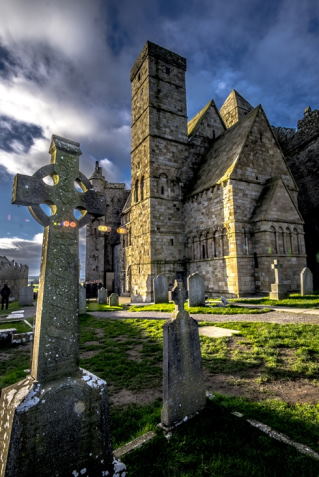
Other than a proportionally small number of church burial registers and those created by Glasnevin Cemetery, most researchers were limited to discovering a date of death in a civil record, a book of headstone inscriptions or a newspaper report.
In recent years, mainly thanks to the internet, family history society volunteers, and local community groups, more Irish burial records, headstone inscriptions, cemetery registers, and death/funeral announcements can be found much more readily, even if the gathering of information is still largely being done in a fragmented manner.
This page of Irish Genealogy Toolkit should help you. It includes details and links to the larger online sources of headstone inscriptions and photos and burial ground records and photos, all of which are free to users, if not to the burial authorities. My list also includes sources for burial registers of localised, individual or clustered burial grounds, and other suggestions for tracking down these important records.
Irish burial registers and headstone transcriptions
- Belfast City burials, (€) comprising about 360,000 records starting in 1869, on the Belfast City Council website.
- CarlingfordPeople, Co Louth, (€). Headstone transcriptions.
- Clare County Library has transcriptions from more than 120 graveyards here.
- Cork Archives (free) Burial registers from seven burial grounds in and around Cork City can be downloaded in pdf format. So, too, can the registers for Abbey graveyard in Bantry. (Many more are not online but can be accessed in person at the archive.)
- Cork Graveyards (free) Skibbereen Heritage Centre has created a database holding transcriptions of headstones and burial registers from 128 graveyards in County Cork. Although originally taking in only the southwest of the county, geographical coverage has been extended since 2023, spreading east, south and north from Beara Peninsula's County Cork parishes to Macroom, Ballyclough, Clonakilty, Ballincurrig, Killeagh and Youghal, and others. Also photos and videos of some burial grounds.
- Derry City Cemetery Records Project. A volunteer project to transcribe the burial registers of this mixed denomination cemetery. Burials span 1853-1960s.
- Dublin City: Dublin City Library & Archive (DCLA) holds a couple of free databases relating to burials and cemeteries. Currently available only to personal visitors at DCLA, they were, until March 2024, available online and free, and may yet return to that status. In the meantime, their creator, genealogist John Grenham, is hosting the databases (no charge) on his website. Choose the Dublin Graveyards Directory or Dublin Burial Registers. The latter are for Bluebell, Clontarf and Finglas cemeteries.
- Dublin City Graveyards (free) is a collection of ebooks on the graveyards and memorials of St James's, St Catherine's, Bully's Acre and Royal Hospital Kilmainham, and the Moravian Cemetery in Whitechurch. Transcriptions and more, by genealogist and tutor Sean J Murphy MA.
- Dublin Cemeteries Trust (previously Glasnevin Trust) offers a database (€) of more than 1.5million individuals buried in Glasnevin Cemetery alone, plus those interred at Dardistown, Newlands Cross, Goldenbridge and Palmerstown.
- EnfieldGraveyards.com (free) Transcriptions from 32 burial grounds. See Meath and Kildare below.
- Fingal/North Dublin, buried in: (free) This interactive site includes a database holding Irish burial registers from 32 cemeteries located in the north of County Dublin.
- Galway Archives burial registers (free) for more than 60 burial grounds. 40,000+ entries
- Galway Archives (free) has headstone inscriptions for 32 Galway cemeteries, all collected by a volunteer community project.
 Glasnevin Cemetery has a pay-to-view database of its 1.6m residents
Glasnevin Cemetery has a pay-to-view database of its 1.6m residents- Glasnevin cemetery. Renamed Dublin Cemeteries Trust, March 2021. See above.
- Kerry Local Authority burials (free) records from 140 cemeteries in the care of the county's council.
- Kildare County Council’s County Archives service has made a selection of interment registers for 15 graveyards available online (free). Included are burials at Ballybracken, Kildangan; Crosspatrick, Kilmeague; Fontstown, Athy; Laraghbryan, Maynooth; St. Conleth’s, Newbridge; St. Corban’s, Naas; Nicholastown, Athy, and Yewtree, Monasterevin. Dates of burials vary. Earliest is 1887.
- Kildare Local History Society. Results of a survey carried out in 1989 by Naas Local History Group of Maudlins Cemetery in Naas. Text and video.
- Kildare : See 'Meath and Kildare' below.
- Limerick City Archives (free) has the burial registers of Mount St. Lawrence (searchable database) and Mount St. Oliver (pdf downloads).
- Limerick Local Studies (free) An index to 34,310 notices of deaths published in the Limerick Chronicle (and other local papers) from 1781 to 1951. These include death notices, obituaries, funeral reports and news stories pertaining to the demise of Limerick persons.
- Mayo (free) Headstone transcriptions from nearly 80 burial grounds across the county.
- Meath and Kildare, 1554-2014 (€) is collection of 11,961 transcriptions from 32 cemeteries across the Enfield Common Bond Area in counties Meath and Kildare. Used to be free at a bespoke site (enfieldgraveyards.com); now online only at Ancestry.
- South Dublin (free) registers, photos and headstone transcriptions from Deansgrange and Shananagh cemeteries in the Dun Laoghaire and south Dublin area. On-going project.
- St Peter's, Bray, Co Wicklow. More than 9,000 burials, (20th century onwards)
- Tipperary Studies collection: Gathered from a number of unconnected sources, this collection of transcriptions covers more than 100 graveyards across the county.
- Waterford Libraries offers free ebook versions of burial registers for five Co. Waterford cemeteries, and funeral books spanning 1874-1918.
- West Cork Graveyards Database extended its area of coverage in 2023-24. See "Cork Graveyards" above.
- Wexford County Archive: Wexford Town Burial Registers can be downloaded as pdfs, free, for the oldest municipal cemeteries: St Patrick's, St Micheal's, St Luke's and St John's, spanning 1881 to 1926.
Other major Irish burial records and headstones collections
The list above includes websites that provide access to Irish burial records in specific towns, counties or regions.
The list below provides details of volunteer-donated material to larger, usually island-wide databases.
Largest volunteer-led collections (island-wide) of Irish burial records
The largest volunteer-led sites for headstone transcriptions in Ireland are:
- FindAGrave.com - 1,906,363 entries, Sept. 2023. (also indexed on Ancestry)
- BillionGraves.com -152,515 entries (also indexed on FindMyPast)
- IGP Archives.com - 172,000 entries, most both transcribed and photographed
- From-Ireland.net - 57,500 entries (also indexed on Ancestry and FindMyPast)
Interment.net is another source for Irish burial records data. While some of its records come from headstone transcribers, others are gathered from cemetery offices, government offices, church offices, and archived documents.
FindMyPast (€$£)
The FindMyPast database holds an eclectic mix of Irish burial records, including many collected from headstones. They are spread across two collections:
Parish Burials in Life Events and Civil Deaths and Burials in Life Events
The list below includes all the record sets as at March 2024. They are accessible via one or other of the links above. To select individual record sets from the landing page, choose your preference from 'Browse Record Set'.
- Galway County Burials
- Northern Ireland Deaths, 1998-2021
- Cantwell's Memorials of the Dead
- Billion Graves Cemetery Index
- Ireland Deaths 1864-1870
- Irish Death Notices In American Newspapers
- Irish Deaths 1864-1958
- Tyrone Cemetery Records
- Donegal Cemetery Records
- Farrar's Index 1771-1812 to Irish BMDs
- Fermanagh Cemetery Records
- Fermanagh Parish Registers Burials
- Down St Colman's Annaclone (RC) Burials 1851-1913
- Down Annaclone (CoI) Burials 1877-1900
- Dublin City Cemeteries 1805-2006
- Dublin Church of Ireland burials 1620s-1799
- Ireland Memorial and Burial Register, 1618-2005
- Ireland Memorial Inscriptions
- Ireland Roman Catholic Parish Burials
- Roscommon Kiltullagh Cemeteries Ireland
- Gravestone Records Ireland
- Non-Conformist Burials Ireland
- Society Of Friends (Quaker) Deaths
- Irish Parish Register Burials, Ffolliott Collection
- Leitrim Cemetery Records
- LondonDerry City Cemetery 1853-1961
- Memorials Of The Dead: Galway & Mayo (Cantwell's)
- The Registers Of St. Patrick, Dublin, 1677-1800 & 1907
- The Register Of Derry Cathedral 1642-1703
- Thomas Philip Le Fanu, Registers of French Church Of Portarlington,1908
- Tipperary Clans Archive
- Waterford County Burial Records
- Wicklow Cemetery Records
RootsIreland.ie (€$£)
The RootsIreland.ie database is managed by the Irish Family History Foundation, the organisation that also manages the all-island network of county genealogy and heritage centres.
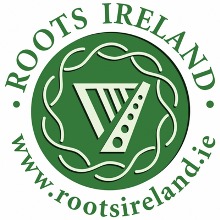
Experienced genealogists run these centres, and a significant part of their work involves transcribing locally-held church registers, civil BMD registers, headstone inscriptions, and other documentary sources of potential genealogical value.
Just as each county on the island has its own unique history, so its heritage centre - and its mix of surviving records - is different to its neighbours.
Some centres have transcribed many church burial records; others have none. Some centres have been involved in the transcription of headstone inscriptions in local burial grounds; others have not.
The database reflects these differences, but you can see which Irish burial records each centre holds via the online sources widget.
Graveyard surveys (free)
During the last decade, the marriage of two techologies - land-scanning for burial plots and the creation of online-accessible databases - has helped a new breed of headstone inscription collectors to emerge. Burial ground surveys have become the specialitiy of a small number of enterprises in Ireland, and the work has transformed the collection, accuracy, and presentation of interment records.
Most of these surveys first identify the individual burial plots. The residents of the plot are easy enough to identify if there is a legible headstone. But what if there is no legible marker? The second stage of the survey begins by bringing together the local community and asking them what they know about the burial ground, who is buried there, and to gather stories, names and other anecdotal information about the place and its inhabitants.
The memories of the local community can be long indeed! And this has helped the surveyors to produce maps of the burial ground, with most, if not all, plots identified by surname, at least.
In one form or another, the data is then placed online, usually free to the researcher, and can be searched by name of the deceased, plot number, or burial ground.
The three main operators of Irish burial record surveying are:
DiscoverEverAfter and IrishGraveyards are fairly similar as they supply graveyard management services, first and foremost. The collection and publication of their transcripts is a by-product very much enjoyed by family historians.
DiscoverEverAfter has been particularly active in Northern Ireland's counties Armagh, LondonDerry and Tyrone, but has also ventured into the Republic with some large projects in counties Louth, Meath, Dublin, Leitrim, Westmeath and Carlow.
IrishGraveyards'
main areas are in Atlantic coastal counties, especially Donegal, Galway
and Mayo, but they have also carried out surveys in counties Longford,
Cavan, Down, LondonDerry, Louth and Offaly.
HistoricGraves is slightly different, and is heritage and community-led, rather than church or local authority-led. In most cases, funding is provided from regional heritage grants to local volunteer groups who clear vegetation from burial grounds, as required, and then record not only the headstone transcriptions but also the heritage and stories of people who have been associated with it.
Photos, transcripts, stories, maps and more are then uploaded to the website. More than 800 graveyards, cemeteries and other burial grounds have been subject to the Historic Graves treatment. They are all in the Republic of Ireland.
Indispensable!
Irish Genealogy Guide
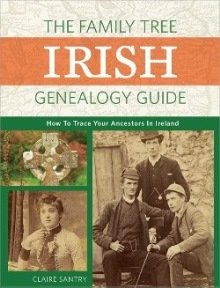 Written by the creator of Irish Genealogy Toolkit and Irish Genealogy News, 'The Family Tree Irish Genealogy Guide' is full of advice, tips and strategies to ease what can be a challenging journey. Its guidance will be useful to any researcher of Irish heritage, but especially for the target Irish-American researcher who's struggling to work back to Ireland from their immigrant ancestor.
Publisher: Penguin. ISBN:9781440348808/240pgs.
Click/tap image for details
Written by the creator of Irish Genealogy Toolkit and Irish Genealogy News, 'The Family Tree Irish Genealogy Guide' is full of advice, tips and strategies to ease what can be a challenging journey. Its guidance will be useful to any researcher of Irish heritage, but especially for the target Irish-American researcher who's struggling to work back to Ireland from their immigrant ancestor.
Publisher: Penguin. ISBN:9781440348808/240pgs.
Click/tap image for details